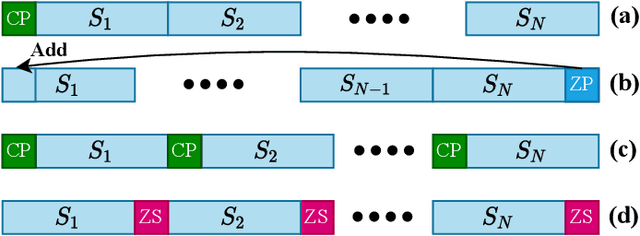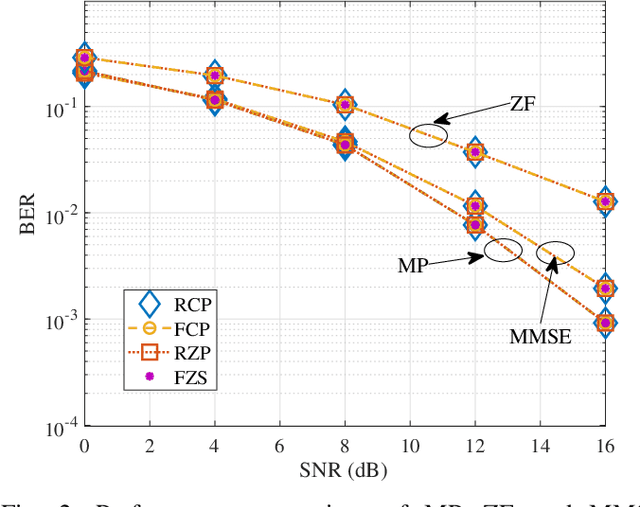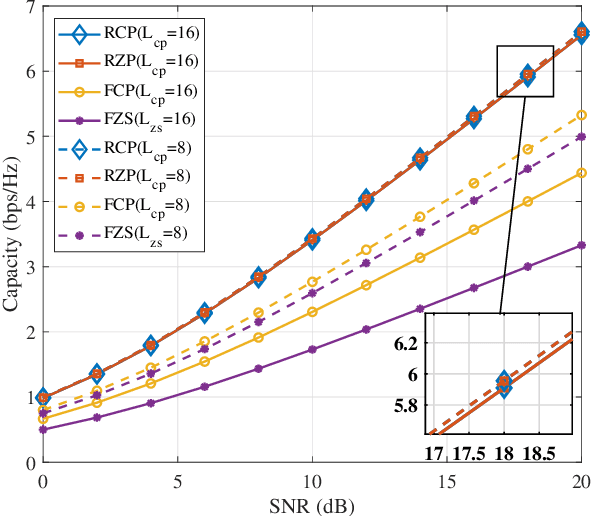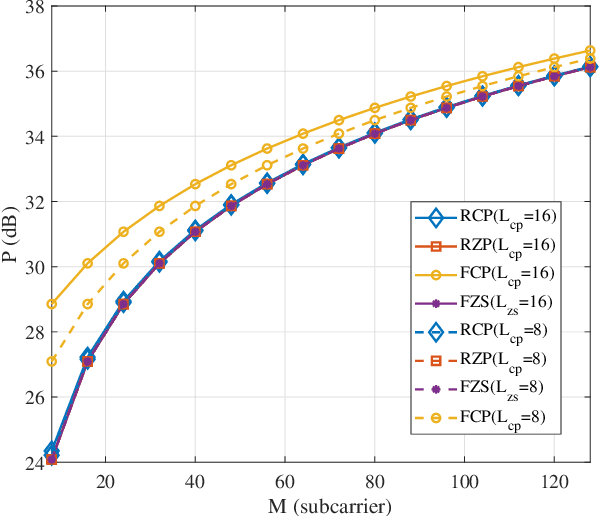Effect of Prefix/Suffix Configurations on OTFS Systems with Rectangular Waveforms
Paper and Code
May 30, 2022



Recently, orthogonal time-frequency-space (OTFS) modulation is used as a promising candidate waveform for high mobility communication scenarios. In practical transmission, OTFS with rectangular pulse shaping is implemented using different prefix/suffix configurations including reduced-cyclic prefix (RCP), full-CP (FCP), full-zero suffix (FZS), and reduced-zero padded (RZP). However, for each prefix/suffix type, different effective channel are seen at the receiver side resulting in dissimilar performance of the various OTFS configurations given a specific communication scenario. To fulfill this gap, in this paper, we study and model the effective channel in OTFS systems using various prefix/suffix configurations. Then, from the input-output relation analysis of the received signal, we show that the OTFS has a simple sparse structure for all prefix/suffix types, where the only difference is the phase term introduced when extending quasi-periodically in the delay-Doppler grid. We provide a comprehensive comparison between all OTFS types in terms of channel estimation/equalization complexity, symbol detection performance, power and spectral efficiencies, which helps in deciding the optimal prefix/suffix configuration for a specific scenario. Finally, we propose a novel OTFS structure namely reduced-FCP (RFCP) where the information of the CP block is decodable.
 Add to Chrome
Add to Chrome Add to Firefox
Add to Firefox Add to Edge
Add to Edge